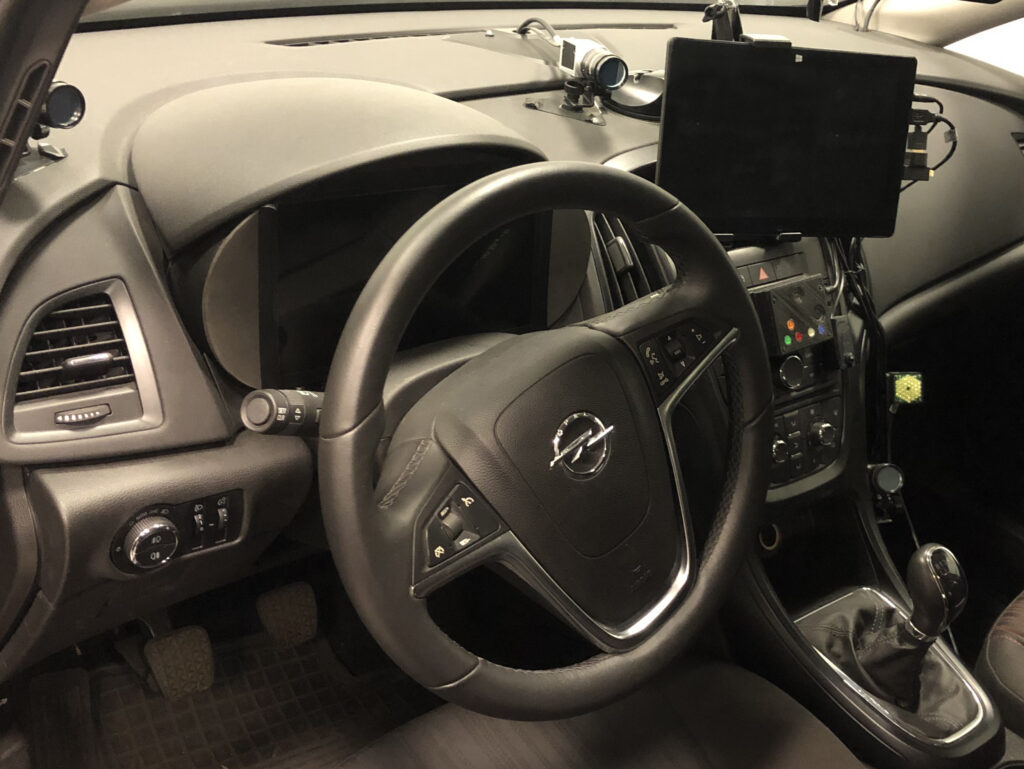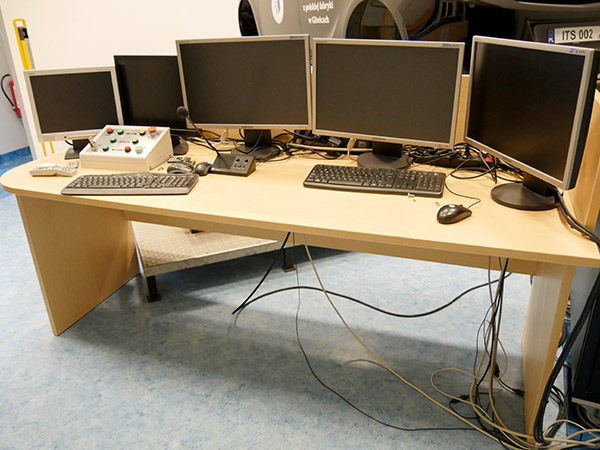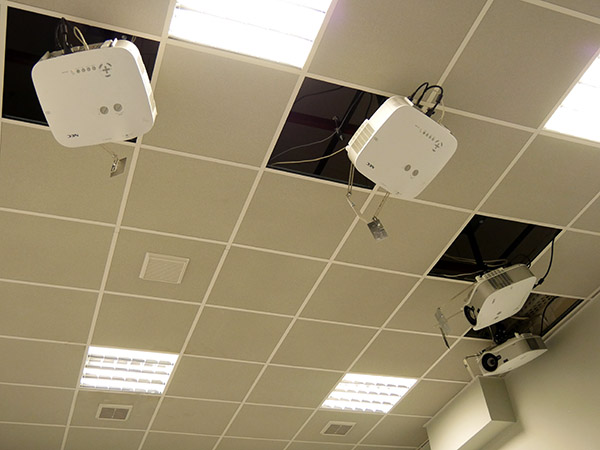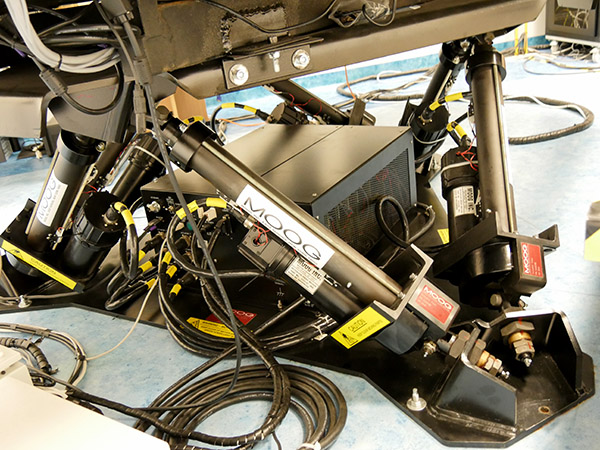The AS1200-6 passenger car simulator
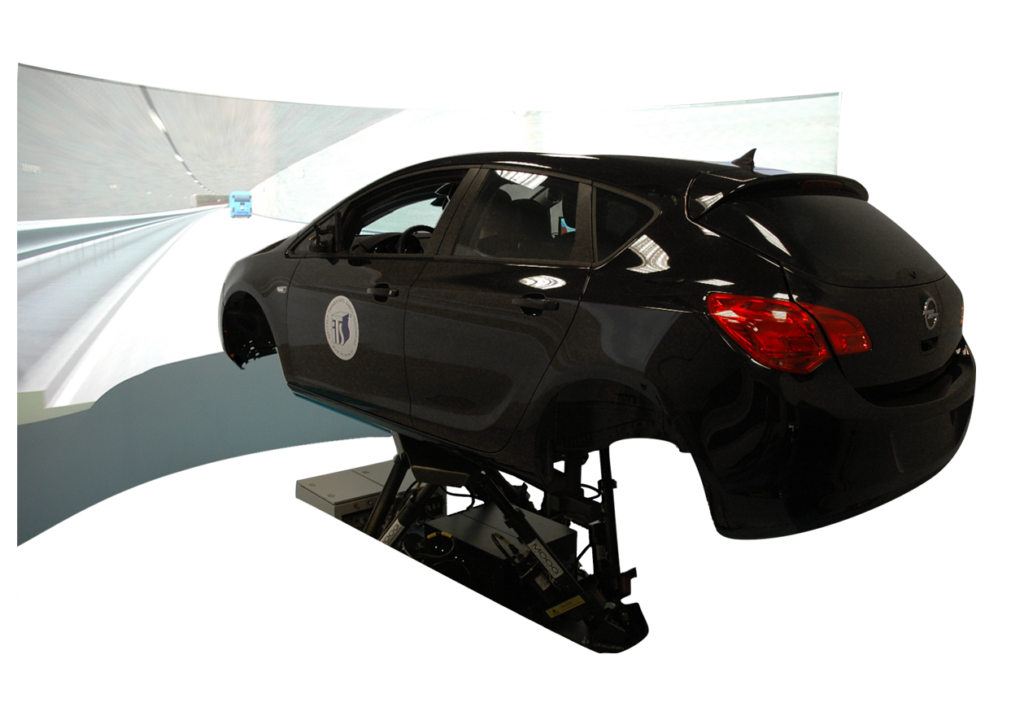
The AS1200-6 passenger car simulator is a high-fidelity device designed for examining impact of various types of dysfunctions (e.g. fatigue) on the ability to perform driving activity. The simulator may be utilized to practice driving skills in difficult road conditions, and due to advanced measurement capabilities, it is suitable for conducting infrastructure research, creating driving models and reconstruction of road accidents, leading a significant impact on safety.
Owing to the full-size Opel Astra IV cabin and high resolution image presentation system, driving a passenger car simulator creates the impression of participation in real road traffic. Additional generated mechanical stimuli (vibration of the driver’s seat and the seat) and sound effects (four-channel sound system inside the cabin) intensify the impression of performing driving activity in real conditions.
Important elements of the passenger car simulator are the six degrees of freedom motion platform and the visualization system, consisting of a set of projectors and cylindrical screen which covers ca. 200º of driver’s horizontal view and ca. 30º of the vertical view. The field of view corresponds to normal driving conditions, which means that when performing a driving task, the driver cannot see the edge of the screen, but the scenery moves according to the speed, generated by the simulation system (trees, buildings, road infrastructure elements, people, etc.). In addition, the side mirrors replaced by tablets imitate real use, showing the scenery at the back of the simulated vehicle.
Extensive simulator software allows projection of several dozen road objects simultaneously and imitation of driving on hundreds of kilometers of virtual roads, in various atmospheric and road conditions, such as rain, wind, snow, reduced grip surface, fog, night or day, in any combinations. It is also possible to simulate some types of vehicle breakdown, e.g. a flat tire or a damaged braking system.
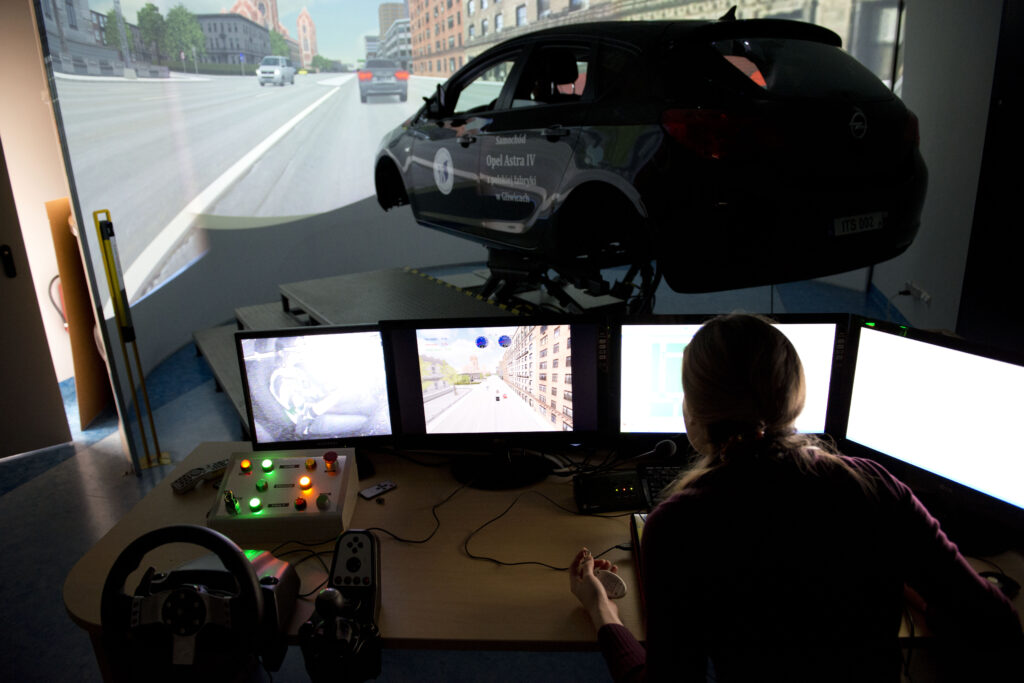
Controlling the simulation program and recording the driving process is possible from the operator’s station. The data recording system allows to save the motion parameters of all vehicles and events that occur throughout the research scenario. It is possible to acquire dozens of different variables at the same time. In addition, it is also possible to monitor driver reactions related to objective behavioral measures such as reaction time, pedal pressure, steering wheel movements as well as psycho-behavioral measures e.g. eye movements, brain activity and galvanic skin response.
The AS1200-6 simulator is a high-class device designed for testing drivers in terms of the impact of factors important for the functioning of road traffic, e.g. the tendency to take risky behavior. These factors are associated with:
· driver:
– driving experience,
– health disorders,
– taking intoxicants,
– psychomotor efficiency (reaction time, twilight vision, divisibility of attention, hand-eye coordination, stereoscopic vision),
– intellectual efficiency,
– personality traits,
· infrastructure:
– road marking,
– the impact of advertising and / or lighting on the driver’s perception,
– location of additional side road elements (e.g. recording devices),
– modeling driver behavior on a given road segment,
– I2V communication,
· vehicle:
– autonomous driving systems (lane assistant, adaptive cruise control, etc.),
– driving assistance systems,
– cockpit ergonomics,
– additional devices affecting security (mobile phone).

Measuring the impact of the above-mentioned factors is possible not only due to the data from the simulator itself, but also by using advanced biometric equipment at the Motor Transport Institute, including oculography to examine eye movement, EEG examining bioelectrical brain function and other equipment used in psychophysiological tests, such as GSR (skin-galvanic reaction), EMG (electromyography) and ECG. The driver, with the wide range of sensors, is able to hide no reaction from the researcher. The application of this type of research would not have been possible without the cooperation of the Institute with experts of neurologists or psychophysiologists.



